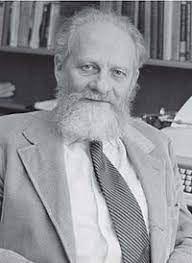Blau, Peter

Bio: (1918-2002) Austrian-American sociologist. Peter Blau got his Ph.D. from Columbia University and lectured at the University of Chicago and Columbia University. Blau first became famous for his study of bureaucracy, which was the subject of his books Dynamics of Bureaucracy (1955) and Formal Organizations (1962). His research on bureaucracy was on the sociological trail of Max Weber, however, unlike Weber, Blau believes, based on his own empirical and theoretical research, that deviating from the official structure within a bureaucratic organization does not have to be disastrous for the organization. The reverse case is far more common. Based on his research of a federal institution, whose center was in Washington, he concluded that the illegal practice of consulting officials of the same rank contributed to better efficiency within that institution. The reasons that, deviating from strict bureaucratic rules, lead to better work organization and greater efficiency are twofold. On the one hand, workers within an institution or company constantly create their own norms of work practice, and on the other hand, strict rules, no matter how detailed, can never predict all the problems that may arise in practice.
Another field in which Blau made an extraordinary contribution to sociology is the Social exchange theory, which he began to develop in the 1960s, especially in the book Exchange and Power in Social Life (1964). Social exchange theory is based on the study of interpersonal interaction in small groups. He believes that there are four basic processes of exchange: attraction, competition, differentiation, and integration, each of which takes place, both between individuals and between collectives. These processes of exchange, when they take place in personal interaction, are guided by the rewards that individuals receive from that interaction. Rewards can be tangible or intangible (emotional). The social structure grows out of the established relations of exchange within the group. The individual search for awards leads to differentiation, but also cohesion in the group. Individuals who have a greater ability to give rewards to others grow into group leaders. Because it is impossible to achieve direct exchange, at the level of global society, between all individuals, at the macro level common values and norms are supported by the indirect social exchange. Values and norms, adopted as a consensus, govern the processes of social integration and differentiation at the level of complex social structures.
In the 1970s Blau moved away from the social exchange theory and study of micro levels, and directed his theoretical work to the macro level, and developed his structural approach. In his books Inequality and Heterogeneity (1977) and A Circuitous Path to Macrostructural Theory (1995), Blau advocates the theory that sees social structure as a network of relationships that connects people within society. The basic unit of social structure is no longer individuals, but a set of social positions they occupy. Parts of the social structure are sets of the same positions. Relationships between sets of the same positions form networks of relationships between members of different sets of positions. The beginning of a social structure occurs when a group of people begins to unite due to some socially relevant distinction. The social distinction is based on social characteristics (age, race, gender, religion, ethnicity) when these characteristics determine the patterns of human interaction. Blau calls these socially relevant positions within the structure "parameters".
Parameters act as a criterion of classification when they significantly affect the real social relations between individuals. Within society, there are multiple positions that an individual can take (individuals, most often, take several different social positions). The positions that individuals occupy are connected in complex ways, so there are social structures that intersect with each other. The positions that an individual occupies can be mutually reinforcing or in conflict with each other. When positions are mutually reinforcing, then an interaction based on one distinction increases the chances of making a connection based on another distinction.
Blau, together with the American sociologist Duncan Otis Dudley, published a very important study, The American Occupational Structure (1967). For this study, they conducted detailed statistical surveys of over four hundred professions, and also studied intergenerational mobility.
Main works
Dynamics of Bureaucracy (1955);
Formal Organizations: A Comparative Approach (1962);
Exchange and Power in Social Life (1964);
The American Occupational Structure (1967);
On the Nature of Organizations (1974);
Inequality and Heterogeneity: A Primitive Theory of Social Structure (1977);
Structural Context of Opportunities (1994);
A Circuitous Path to Macrostructural Theory (1995).

